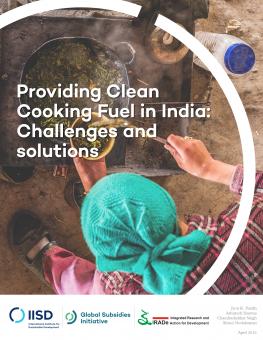
Providing Clean Cooking Fuel in India: Challenges and solutions
This report explores the issues and challenges of clean cooking in urban India through a case study of the Ghaziabad Municipal Corporation in Uttar Pradesh. The report analyses results from a survey of 250 households in Ghaziabad district which yielded statistics and insights on clean cooking coverage and accessibility, energy usage and prices and how gender is an important determinant of cleaner cooking fuels.
India has the world’s largest concentration of population using biomass with inefficient stoves—about 840 million people in India rely fully or partially on traditional biomass for cooking.
In India, cooking is mainly carried out by women, and they thus play an important role in managing domestic energy needs. When modern fuels such as liquefied petroleum gas (LPG) are unavailable, women and children not only face health hazards due to smoke but also “time poverty.” Freedom from smoke and the drudgery associated with biomass is a pressing need to empower women and allow families to live purposeful lives.
This report explores the issues and challenges of clean cooking in urban India through a case study of the Ghaziabad Municipal Corporation in Uttar Pradesh. The report analyzes results from a survey of 250 households in Ghaziabad district which yielded statistics and insights on clean cooking coverage and accessibility, energy usage and prices and how gender is an important determinant of cleaner cooking fuels.
You might also be interested in
India Faces Clean Energy Challenges as Energy Demand Soars and Global Fossil Fuel Subsidies Rise
New research finds the global energy crisis and increasing energy demand have pushed India's energy subsidies to a 9-year high.
G20 energy ministers call for cooperation on nuclear energy & low-emission hydrogen
The Group of 20 energy ministers' meeting concluded in Goa on July 22, 2023, with the final summary failing to include language on the phase-down of unabated fossil fuels.
Implementing Solar Irrigation Sustainably
This guidebook provides recommendations to state policy-makers on how they can implement solar irrigation models, particularly decentralized solar plants for irrigation under the PM-KUSUM scheme, effectively and sustainably.
G20 Finance Ministerials and World Bank/IMF Spring Meetings: Expert comment
G20 finance ministerials and World Bank/IMF spring meetings will take place this week in Washington. High on the agenda is the need to mobilize trillions of dollars of investment in the transition to clean energy.